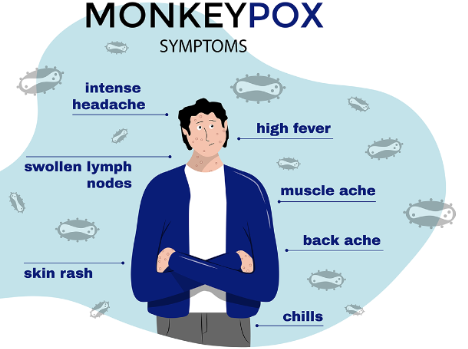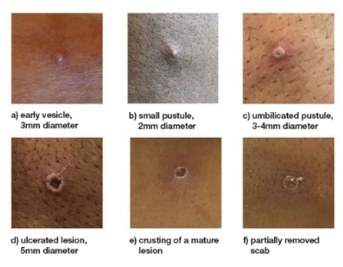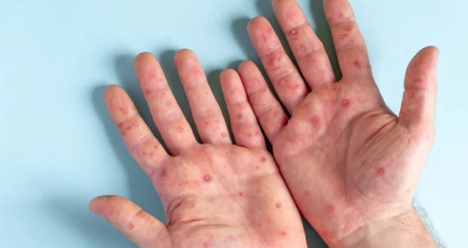As many know from first-hand experience, the first pandemic was a significant global event in recent history. It affected nearly the entire world and was first identified in 2019. After the world practically shut down for two and a half years, it returned to normal, though social distancing remained in many areas.
What if I told you that there was a risk that we would have that quarantine again?
I introduce to you Monkeypox. This rare disease genetically spawns in remote parts of Central and West Africa. It was first discovered in monkeys in 1958 and traveled to the human body in 1970. This week, 92 confirmed and 28 suspected cases have been reported across 12 countries.
While Monkeypox may sound like the usual Chickenpox, it is far from it. It begins as a widely spread rash with small bumps around 3mm wide disguised as pimples until the rash can grow up to hundreds of them all over the body. These bumps typically attack the face, palms of the hands, soles of the feet, mouth, genitalia, and even eyes. A rash caused by Monkeypox will severely itch before scabbing and falling off.
Monkeypox is primarily spread from animals to humans, much less from human to human, because there would have to have been close contact with bodily fluids. Another risk factor is contact with animals and consuming contaminated meat. This could also happen through an opening on the skin. However, it has been noted not to be as contagious as COVID-19.
How can you prevent Monkeypox?
- Avoiding contact with infected animals (especially sick or dead animals).
- Avoiding contact with bedding and other materials contaminated with the virus.
- Wash your hands with soap and water after coming into contact with an infected animal.
- Thoroughly cooking all foods that contain animal meat or parts.
- Avoiding contact with people who may be infected with the virus.
- Using personal protective equipment (PPE) when caring for people infected with the virus.
According to experts, Mpox or Monkeypox is not as lethal as COVID-19. Therefore, there’s a low risk of a pandemic occurring again. It has only been considered an emergency in Central Africa. Although the risk of Mpox spreading that rapidly to the U.S. remains very low, experts have declared an alarming rate of the virus surging in multiple countries.
Mpox causes signs and symptoms, which usually begin within a week but can start 1–21 days after exposure. Symptoms typically last 2–4 weeks but may last longer in someone with a weakened immune system.
Common symptoms of monkeypox are:
- rash
- fever
- sore throat
- headache
- muscle aches
- back pain
- low energy
- swollen lymph nodes.
 The World Health Organization concludes that most people recover from Mpox in 2-4 weeks if they take the right precautions, such as not popping the blisters, scratching, or shaving infected areas.
The World Health Organization concludes that most people recover from Mpox in 2-4 weeks if they take the right precautions, such as not popping the blisters, scratching, or shaving infected areas.
For more information visit https://www.who.int/news-room/fact-sheets/detail/mpox















